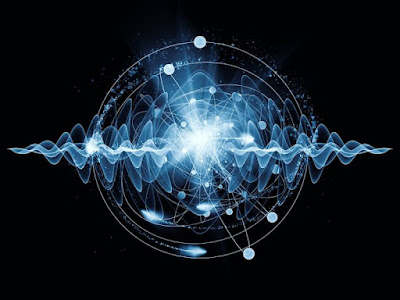• Really, who are we? Are we only human beings who go to work, attend school, and go about our daily lives? Or is it something larger, something more?
• We must go beyond our homes, our nations, and even our planet in order to comprehend who we are. We have to examine the universe, the galaxies, and the stars. Because the reality is that we are a part of the cosmos, not merely a part of it. In order to help you comprehend who we are in the larger scheme of things, this blog will take you on a voyage through time and space.
We are made of Stardust.
 |
| Image Courtesy: NASA |
• Our Components Are Stardust Every single element of your body, including your brain, blood, and bones, is composed of atoms that were once found inside stars. This may sound like science fiction, but it's actually true. There were just three elements in the early universe: hydrogen, helium, and a trace amount of lithium. These served as the foundation for the first stars.
• Over millions of years, nuclear fusion produced new elements inside those stars. These elements, such as carbon, oxygen, iron, and nitrogen, were released into space as those stars burst into massive explosions known as supernovae. Later, the components combined to create Earth and other planets. And life started on Earth. This implies that the calcium in your teeth and the iron in your blood were created within stars.
Earth: A Small, Blue Dot in the Universe
 |
| Image Courtesy: NASA |
• A spacecraft called Voyager 1 peered back to Earth in 1990 from around 6 billion kilometers away. Earth appeared in the image as a pixel, a small dot. That image, known as the Pale Blue Dot, rose to fame. According to astronomer Carl Sagan, "That's here." Home is that. That is who we are. Everyone you know is on that small dot. Every invention, every love story, every battle, every life—all of it took place on that tiny blue dot in the blackness of space.
• We can learn something crucial from this image: Earth is a tiny, delicate planet. The universe is so vast that it is difficult to comprehend. Each galaxy contains billions or possibly trillions of stars, and there are more than 2 trillion galaxies in the universe. Planets orbit a large number of those stars. Therefore, humans are only a tiny portion of the universe and not its center.
Life : a cosmic miracle
• About 3.5 billion years ago, life first appeared on Earth. Life was relatively primitive for a long time, consisting just of tiny cells in the ocean. Over millions of years, life gradually grew more complicated. There were fish, insects, birds, mammals, and dinosaurs. Finally, about 200,000 years ago, humans appeared. We are unique because we are able to think, envision, and ask questions in addition to being able to walk and speak.
• We are curious about our origins. "Is there someone else out there?" we wonder ourselves when we gaze up at the skies. Part of what makes us human is our curiosity. To view far-off galaxies, we construct telescopes. To investigate distant planets, we send spacecraft. We imagine going to other stars or perhaps relocating to Mars.
The universe is trying to understand itself, and we are it.
• Here's a crazy thought: You are the cosmos reflecting on yourself. It may sound absurd, but consider it. Your brain's atoms used to float in space. You are currently reading and comprehending this site thanks to the identical atoms. Thus, via us, the cosmos has gained consciousness.
• The universe is not distinct from ourselves. We are not observers from the outside. We are the universe's interior, watching over it. Think of us as tiny waves that briefly rise and then fall back if the universe were a huge ocean. However, we are a part of something far bigger, even for that brief instant. Something lovely. A cosmic thing.
What If We're Not the Only One?
• As of right present, the only known home of life is Earth. However, scientists think that there might be billions of planets that resemble Earth. Some of them may have air, water, and the necessary elements for life. If life occurred here, it might have occurred elsewhere as well. Perhaps there are sentient beings observing their night sky and pondering whether they are alone. We're not sure yet. However, the universe is made even more fascinating by the possibility that we are not alone.
Will We Live Among the Stars in the Future?
• Humans have already set foot on the moon today. Mars is being explored by our robots. We've launched spacecraft outside of our solar system. However, this is only the start. We may eventually construct cities on Mars or the Moon.
• We may use new types of spacecraft to visit distant star systems. Perhaps we will find extraterrestrial life on these worlds. Or perhaps we ourselves will bring life to distant worlds. Our descendants may one day inhabit planets that are only in our imaginations now—planets with dual suns, purple skies, or cities that hover above the clouds.
So, Who are we,?
• We are more than just people. We are more than merely residents of a town, community, or nation. We are cosmic entities. The cosmos in which we live is 13.8 billion years old. a cosmos that produced life, planets, stars, and you. Stardust is what makes us up.
• We are traveling through space on a tiny planet. We are the only known species capable of dreaming, reaching for the skies, and wondering. Look up the next time you feel insignificant or little. Keep in mind that you are more than just the cosmos. The universe is you.








.jpeg)


0 Comments